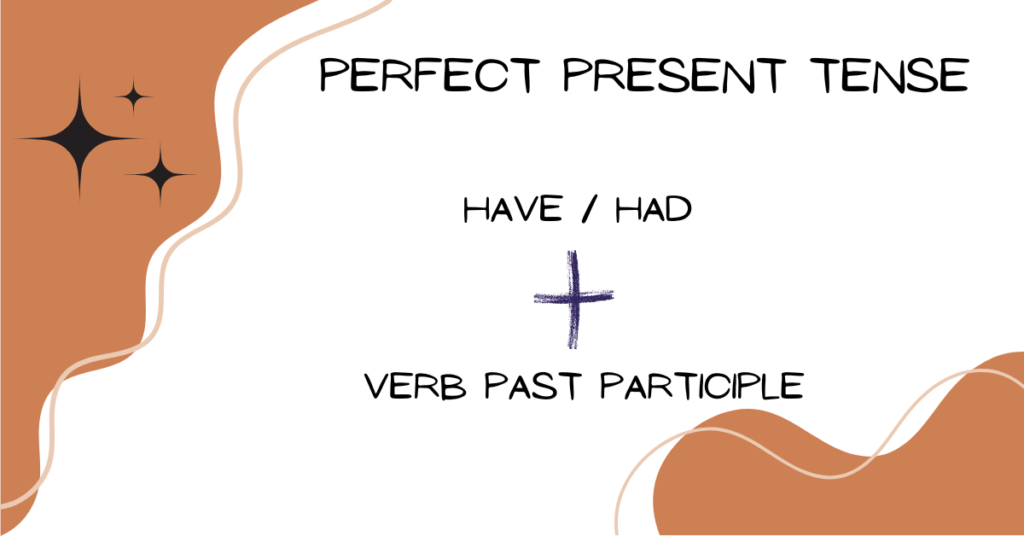
The present perfect tense is used to describe actions or states that are connected to the present, but they occurred at an indefinite time in the past. It emphasizes the relationship between past events and the present moment. The present perfect tense is formed by using the present tense of the auxiliary verb “have” (have/has) followed by the past participle of the main verb.
Example: “She has visited Paris several times.”
Explanation: In this sentence, the verb phrase “has visited” is in the present perfect tense. It expresses an action that started in the past and has relevance to the present. The subject “she” has had the experience of visiting Paris multiple times.
- Completed Actions with a Result in the Present:
Examples:
- I have finished my work, so I can relax now.
- She has written a book and it has been published.
- I have studied French for five years, so I can speak it fluently now.
- She has bought a new car, and she is very happy with it.
- Come up with your own sentence.
- Past Actions with an Indefinite Time:
Examples:
- They have traveled to many countries in their lifetime.
- He has visited Paris before, but he wants to go again.
- They have visited Europe multiple times in the past.
- He has eaten at that restaurant before, and he enjoyed the food.
- Come up with your own sentence.
- Actions or Events that Started in the Past and Continue to the Present:
Examples:
- I have known her since we were in college.
- She has lived in this city for five years.
- I have worked at this company since 2010.
- She has lived in this house since she was a child.
- Come up with your own sentence.
- Experiences in Life:
Examples:
- They have seen the Grand Canyon, and it was breathtaking.
- I have never tried sushi before.
- They have traveled to many exotic destinations around the world.
- I have never been to a concert, but I would like to go someday.
- Come up with your own sentence.
The present perfect tense allows us to connect past actions or experiences to the present, emphasizing their relevance or impact on the current situation. It is a versatile tense that helps convey the idea of completed actions, ongoing states, and experiences throughout one’s life.